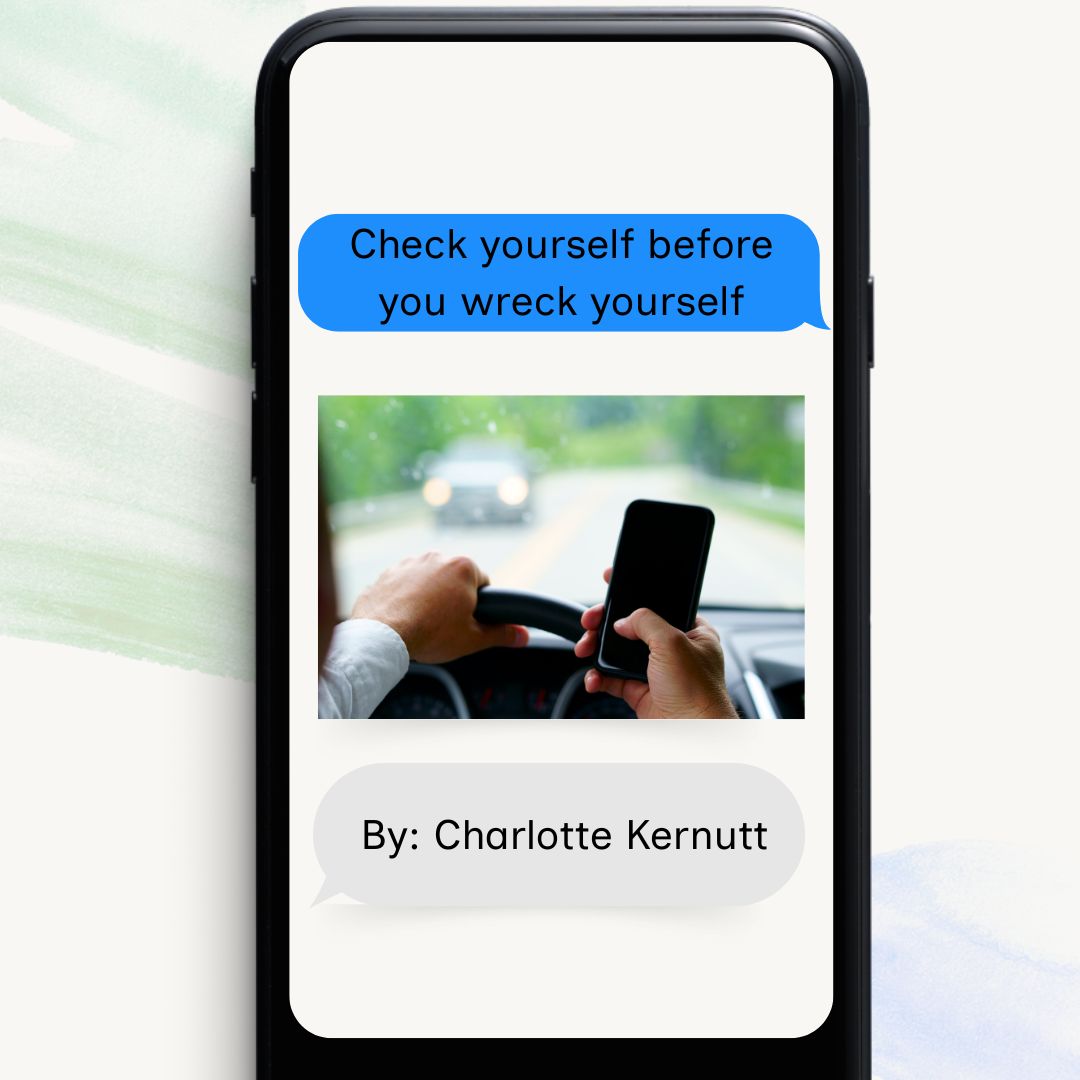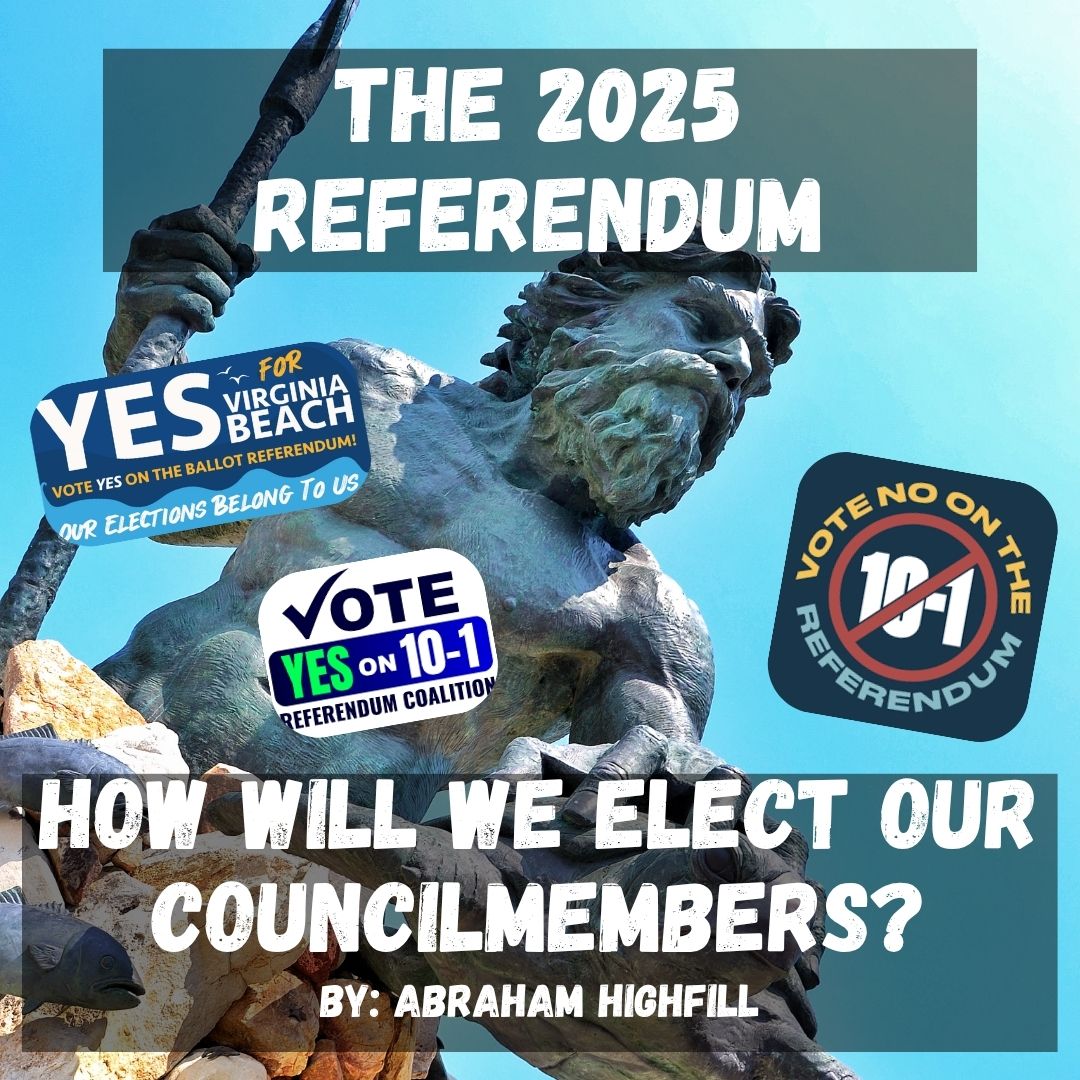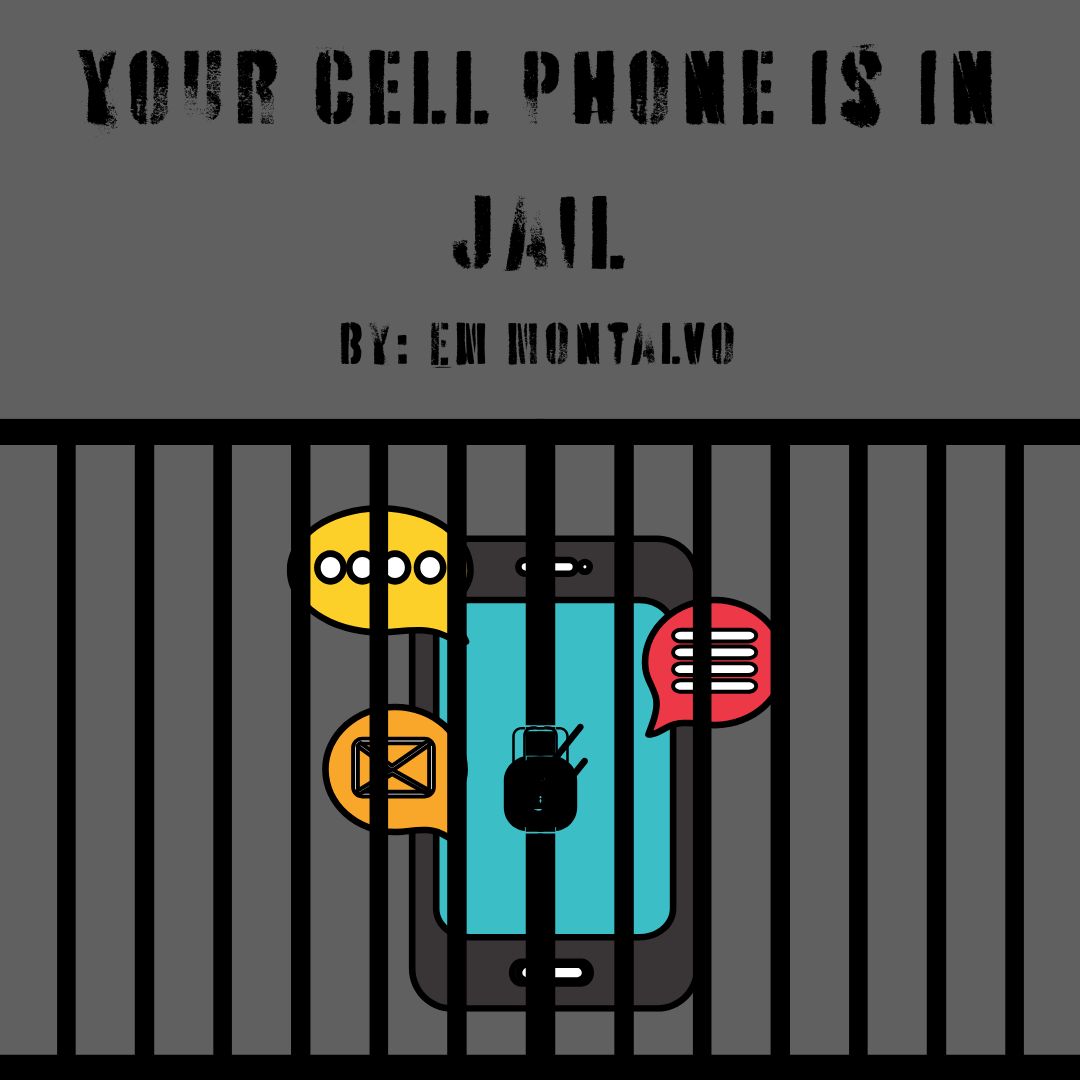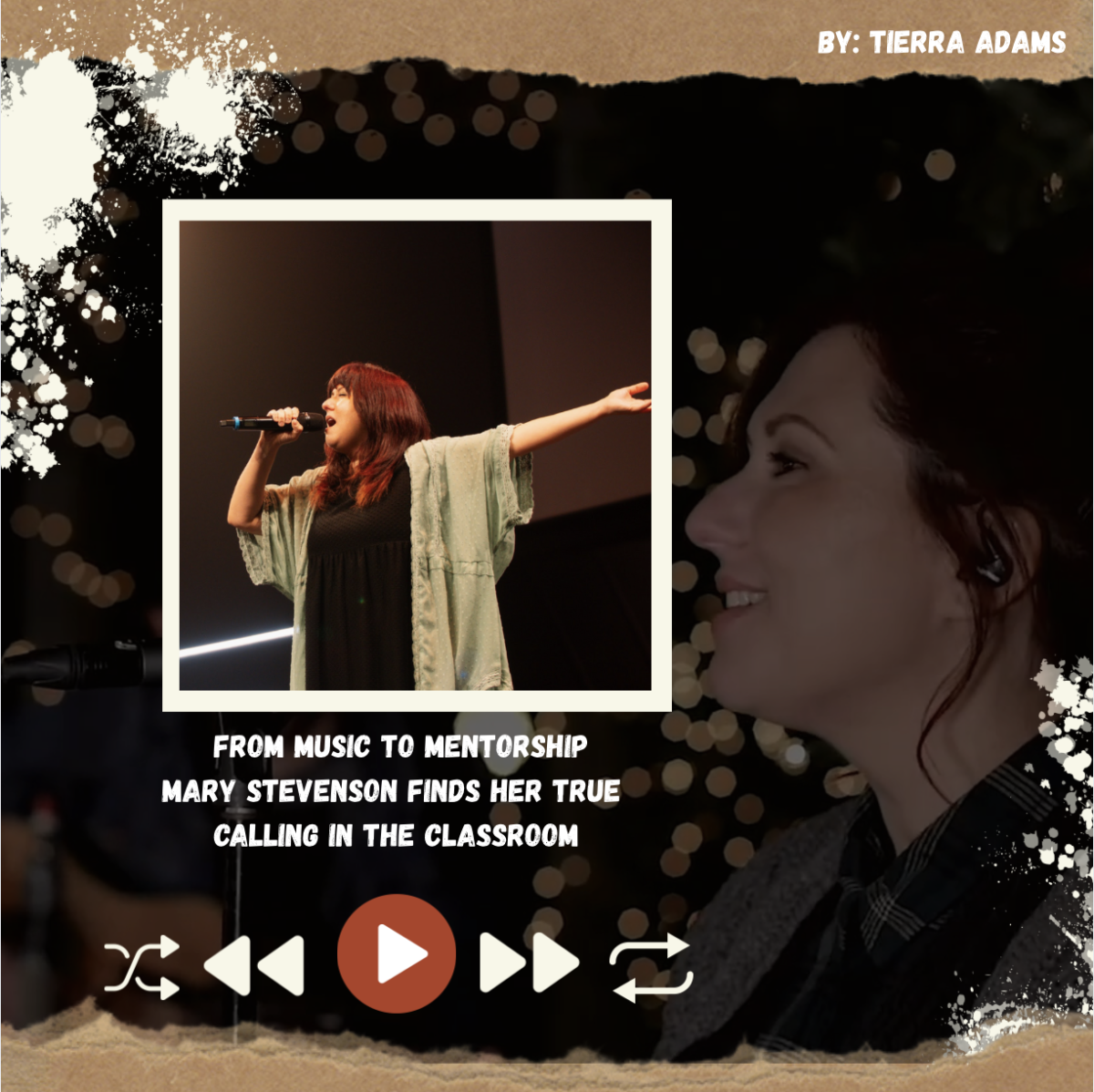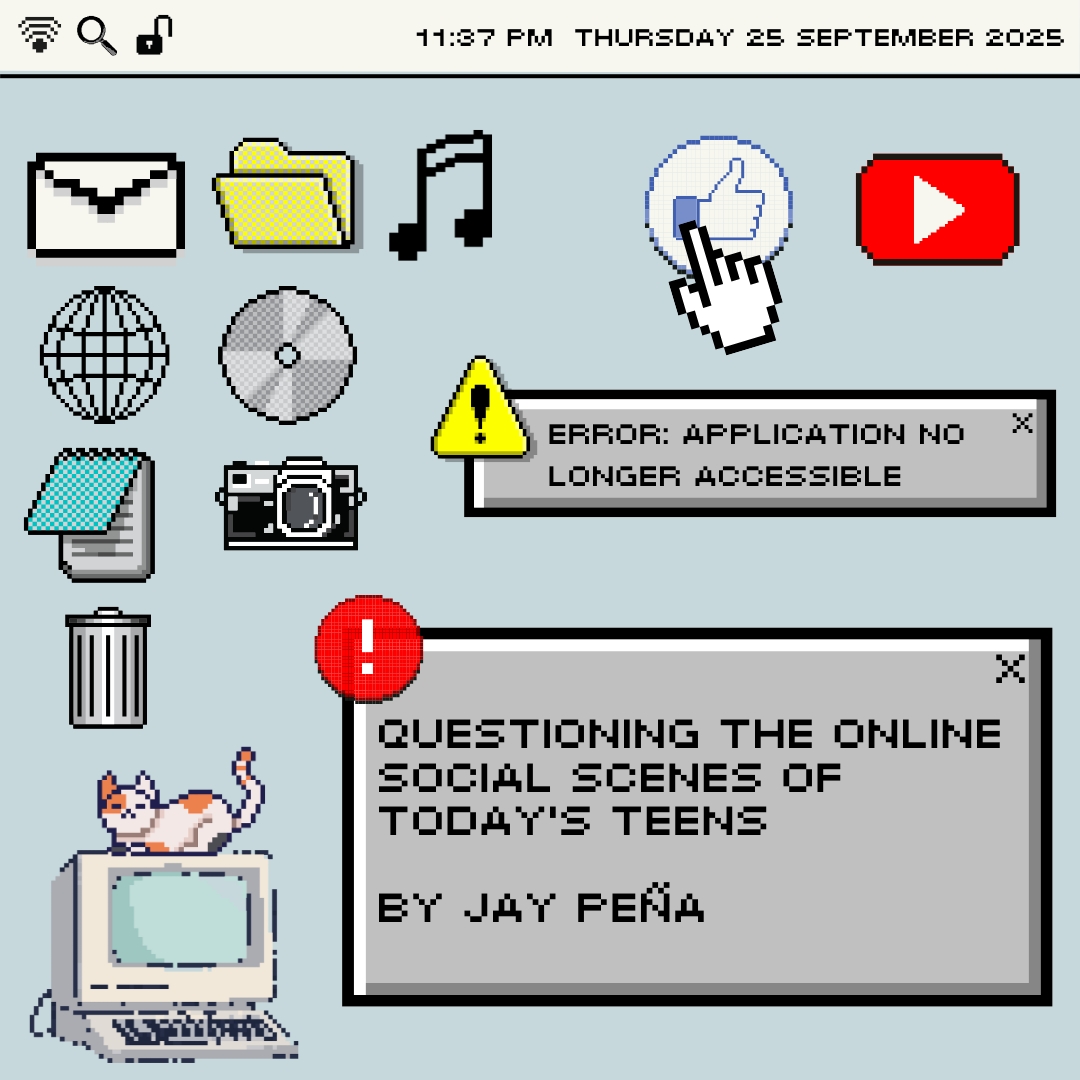Since their invention, cellular devices have been a distraction behind the wheel. Use of devices while driving has long been a prominent topic of controversy, especially when it comes to teens. Teens texting while driving has become almost normalized, resulting in a surplus of adolescent car crashes.
According to attorneys Miller and Zois, in 2021, “distracted driving was a significant factor in road accidents, leading to 3,522 fatalities and approximately 362,415 injuries.”
An anonymous survey conducted by the SunDevil Times shows that most people who drive to school reported that they don’t pick up their cellphones, but they do see other people on their phones at red lights and in transit more often than not.
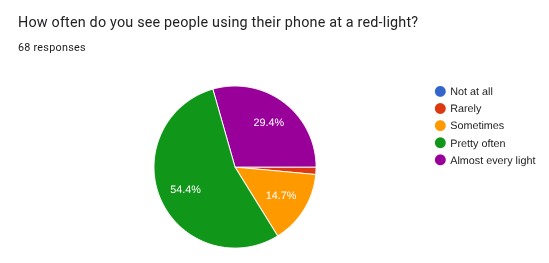
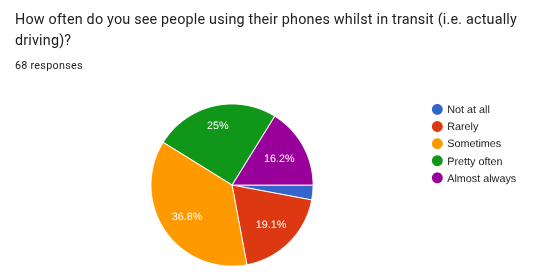
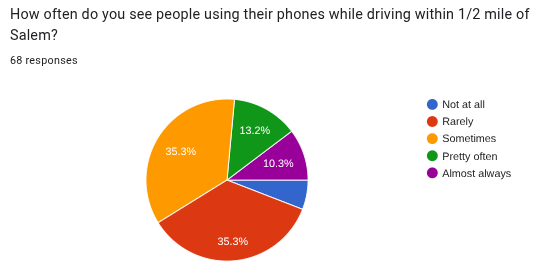
The survey also shows that seeing students texting and driving within a ½ mile of Salem is rare. However, junior Kaitlyn Salway, a new driver, notes numerous people utilizing their phones on her drive to school.
“I see people using their phone while driving almost every day,” said Salway. “It is very common to notice drivers looking down at their laps, scrolling, or holding their phones up to their faces instead of paying attention to the road. Sometimes, I even see people texting at red lights and then continuing to use their phones once traffic starts moving again.”
According to the National Library of Medicine, it is almost impossible for people to multitask regularly, making it even more detrimental to attempt behind the wheel when lives are at stake. Texting is the worst form of cell phone utilization while driving, as it takes the eyes, hands, and brain off the road and diverts them to another task.
“[I do use my phone] for changing music and reading texts while at a red light,” said senior Heather Taylor. “I do not text while driving. It is a problem for everyone.”
From red lights to the road, adolescents have a difficult time taking their eyes off their personal devices. Looking over to change the music, glancing at a text message, and checking the time are all considered device use.
“I have never used my phone while driving because I know it is very dangerous,” said Salway. “The only way I have used my phone while driving is through hands-free features like Apple CarPlay and Siri to send messages.”
Texting and driving is even more problematic for teenagers who are new to driving. The risk of crashing is high, as texting and driving crashes kill hundreds a year. School Resource Officer Jeremy Albrecht has immense knowledge of the subject, as he sees it often.
“[This occurs so] much that the police department has special grant money used just to come in and enforce traffic stops,” said Albrecht. “Driving as a teen, or adult for that matter, is already dangerous enough without being tied up in your phone. Teens are just unfortunately always stuck to their phones. People see me in a police car and try to hide it.”
Albrecht emphasizes that driving requires “100 percent of your attention.”
“Nothing is more important than your life, [even] a cell phone,” said Albrecht. “The number one distraction while driving that causes serious accidents is the use of a cell phone. It’s a misdemeanor traffic offense that will land you in court, and you possibly lose your driver’s license. If you get caught on your phone in a school zone, the punishment is more severe.”
Teenagers who have recently received their license have a newfound freedom, which they need to learn to manage responsibly.
“It’s a problem for everyone, but teenagers [have it] worse,” said Taylor. “Teenagers get distracted easier, and they’re newer to driving, so they don’t have as much experience. Stop texting and driving; pay attention to the road.”
Pay attention. Be alert. Check your habits. Do you check your phone at a red light? Do you use your phone in transit? If you answered yes to either of these, you could get a ticket, or worse, be in a crash caused by texting and driving. By being responsible, you could save lives.
